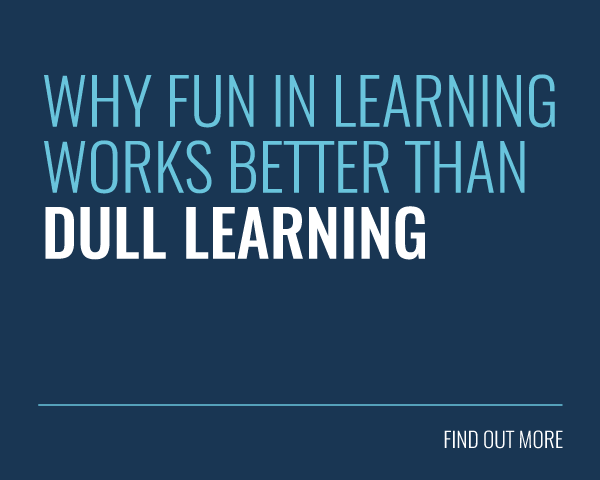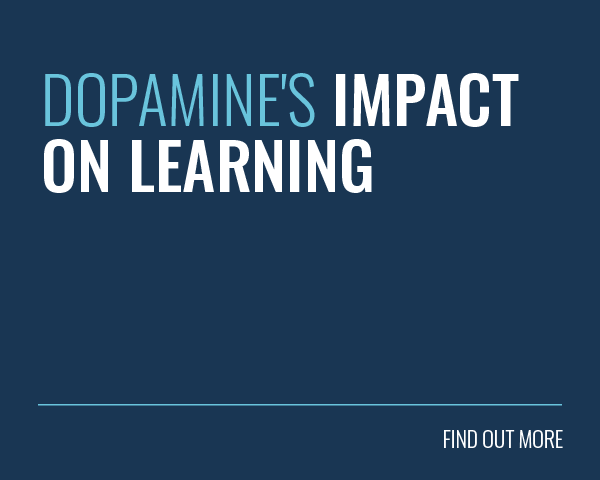 Online Learning without engagement is like a car without an engine. But if you want to drive your learners straight to Engagement Town, what does your engine need? Keep reading to find out how you can turbocharge engagement in online learning!
Online Learning without engagement is like a car without an engine. But if you want to drive your learners straight to Engagement Town, what does your engine need? Keep reading to find out how you can turbocharge engagement in online learning!Sometimes, what engages us most may surprise us. Take brand engagement, for example. No one plans to become a walking, talking commercial for their brand-crush of the moment. Yet when we are in love with the latest gadget, superhero party cape or the best sandwich in town, it’s hard not to shout about it from the rooftops. Brand fans may not be the ideal dinner party guests, but they are a company’s dream.
Imagine if you could generate the same levels of engaged enthusiasm among your learners! Why wouldn’t you want to harness a bit of that magic? Still need convincing? Let’s take a look at what a world without engagement in online learning looks like. Buckle up, as we take a trip on the rocky road of disengaged despair.
Danger Ahead! Consequences of ignoring engagement

You may be thinking, “The staff have to do this training anyway, so why bother making it engaging?” Beware! Ignore engagement and you risk potholes of high drop-out figures, low retention rates and high staff turnover.
High Drop-Out Rates
Studies show online students who feel dissatisfied and isolated in their course are more likely to drop out. Unlike college students, employees can’t necessarily skip your training. However, if your learners are not engaged they will drop out emotionally. They’ll stop caring and stop trying. Before you know it, you’ll have a virtual classroom full or zombie learners who are simply ticking boxes to get their paycheck at end of the day. This is bad news for your learners and bad news for your organisation.
Low Retention Rates
If something is boring or meaningless we’re likely to forget about it pretty quickly. If learners’ don’t understand the benefits of your training they will see it as a chore rather than a worthwhile activity. This is especially true in the information-rich but time-poor world of today.
The modern worker is bombarded by endless distractions, must-see memes, notifications and information. No wonder our attention spans are now lower than those of goldfish! With all the mobile games, Buzzfeed articles and cat videos taking up your learners’ attention and time, your training needs to be engaging enough to hold their interest. Without engagement, your learners won’t retain any of the information you’ve spent hours preparing.
Staff Turnover
Most modern workers want to develop their skills and progress in their career. In fact, 65% identify career opportunities and training as their most important motivators. So, if they don’t feel engaged with your training they will become deskilled and dissatisfied. Unhappy workers are also less productive. They’re also more likely to leave the company to seek an employer who does meet their development needs. With millennial turnover costing the US economy alone $30.5billion annually, high turnover should be the last thing on your L&D shopping list!
Quick, jump back in the car and let’s escape this zombie wasteland!
The Benefits of Engagement in Online Learning
You’ve glimpsed the world of disengaged learners – scary stuff, I’m sure you’ll agree! So, where do you go from here? Engagement paradise of course!
1 Engagement Boosts Productivity
 Successful Learning and Development is the fuel that powers employee engagement. Why? Because by helping employees achieve their development goals you will boost their wellbeing and happiness. By creating online learning that gives your learners a sense of purpose and personal achievement you create a happy workforce. This feelgood factor has added benefits for the wider company because happy employees are 12% more productive.
Successful Learning and Development is the fuel that powers employee engagement. Why? Because by helping employees achieve their development goals you will boost their wellbeing and happiness. By creating online learning that gives your learners a sense of purpose and personal achievement you create a happy workforce. This feelgood factor has added benefits for the wider company because happy employees are 12% more productive.
2 Engage your Employees and Keep them Satisfied
It pays to ensure your training helps create engaged employees because research shows engaged employees are more satisfied with their jobs. Satisfied staff are more likely to innovate, put the effort into their day job and recommend your company as a place to work. No wonder 87% of businesses plan to increase employee engagement this year. You’re in the driving seat to steer the workforce towards engagement paradise!
3 Engagement powers individual and organisational growth
How do you get there? 53% of millennials (the generation due to dominate the workforce by 2025) say learning new skills would motivate them to stay in their job. A further 59% of this generation cite opportunities to develop an extremely important factor when applying for a new job. By creating strong online learning to meet their needs you can attract talent and reduce staff turnover. Successfully enhancing employees skills set will make workers better at their jobs, better communicators and help them power the business’s growth.
4 Engagement Leads to Behavioural Change
By making the purpose of your training clear, learners will be able to successfully apply their new skills in their day-to-day work. Engaged learners are more emotionally invested in your training and therefore more likely to retain what they learn. More importantly, perhaps, they will want to use what they’ve learned because they understand the value of their new skills. Of course, it’s not all about the cognitive stuff! So make sure your training is brimming with meaning, purpose and the feel-good factor.
How to improve engagement in online learning

Step 1. What’s In It For Me
Before we commit to anything in life, a car, an epic road trip or popping down the shop to satisfy a sudden chocolate craving, we need to know what we can gain. The same goes for your learners.
You need to find out what matters to your learners and make it clear how your training meets their goals. Answer your learners’ no1 question: ‘What’s In It For Me’ (WIIFM). For example, 87% of millennials identify career growth as very important. How could your training give them a foot upon that all-important ladder? By meeting learners’ needs and desires you you will motivate them to take part in the training. How will your training meet your learners’ practical needs, personal goals and craving for a bit of sweet fun!
Step 2. Epic Meaning
So, you’ve established ‘What’s in it for them’. Next, create Epic Meaning by making it clear how the training fits in with the wider company values and aspirations. Communicate this message to your learners at every opportunity. This creates a stronger context for their learning and helps learners understand how to apply their new skills and knowledge in their day-to-day work. The ‘information workers’ dominating today’s workforce is motivated by a sense of purpose, desire to make a difference, and fulfilling their passion. Show them how the training meets their motivators within the context of the company’s mission.
Step 3. Personalisation
Everyone likes to feel special. So, give your learners a tailored training experience they’ll remember. For example, let your learners create personal profiles on their LMS. They can use this space to track their progress, bookmark their favourite content, show off their skills and share successes. This is a great way to encourage people to take ownership of their own learning and development.
You can take it a step further by personalising each employee’s experience with an adaptive learning journey that’s relevant to them. For, example a learner could activate suggested training prompts within the LMS, based on their role, interests or competency level. This is another good way to tie your online training in with each learner’s personal goals.
Step 4. Game-based Learning
By simply throwing reams of boring, traditional training at your learners they will soon become disengaged and get distracted by something more exciting. Candy Crush, Plants VS Zombies, virtual scrabble battle anyone? Hold your learners’ attention by creating content that can compete with the ever-growing entertainment overload that surrounds us. Build the training around a meaningful storyline or compelling game that will have your learner swiping right faster the speediest Fruit Ninja in the West.
Step 5. Gamification Glory
Everyone likes to have their hard work recognised so why not celebrate your learners’ efforts? Use gamification to do just that and add fun into the mix. For example, within your LMS create a reward system (points, badges, awards) to motivate your learners to increase their score by completing the training. You can also introduce healthy competition by encouraging learners to compete for the top position on the LMS leaderboard. Spur learners on to complete and retain the training content. They’ll be chasing the sound of virtual party poppers in no time.
Step 6. All in this Together
As we discovered earlier, one of the risks of online learning is that remote learners can feel isolated. Add the social element into your online training to help learners feel supported, part of the learning community and engaged. Within your LMS include features, like discussion groups, where people can ask all their burning questions, build expertise and share their successes.
Step 7. Micro Learning Matters
A long road trip ahead can seem daunting and tedious. That’s why most of us are tempted in for a welcome caffeine boost at the roadside cafe. Like any long journey, lengthy online training can seem overwhelming. To combat this, break it up into digestible chunks of bite-sized content. You can drip-feed these small pieces of training to your learners like the perfect coffee top up! By sending each smaller content item to your learners in spaced-out intervals you will reinforce the learning and avoid the dreaded Forgetting Curve.
Step 8. The Power of Social
Social is also a great way to make all that learning stick and boost knowledge retention rates. This will transform employees from passive into active participants in their learning journeys. For example, set up training related discussion groups within the LMS and encourage learners to challenge each other to a friendly battle of wits (Tools like the Knowledge Arcade can help with this)! All this helps them mentally cement what they learned and put their new skills to the test.
Before you got started on this journey of a lifetime, you may have wondered if engagement was really worth it. After your sightseeing tour of the highs and lows of online learning, we’re sure you’ll agree engagement is an L&D hot spot not to be missed!
Find out more about how to create top-notch engagement with our handy Game Changer Whitepaper.







